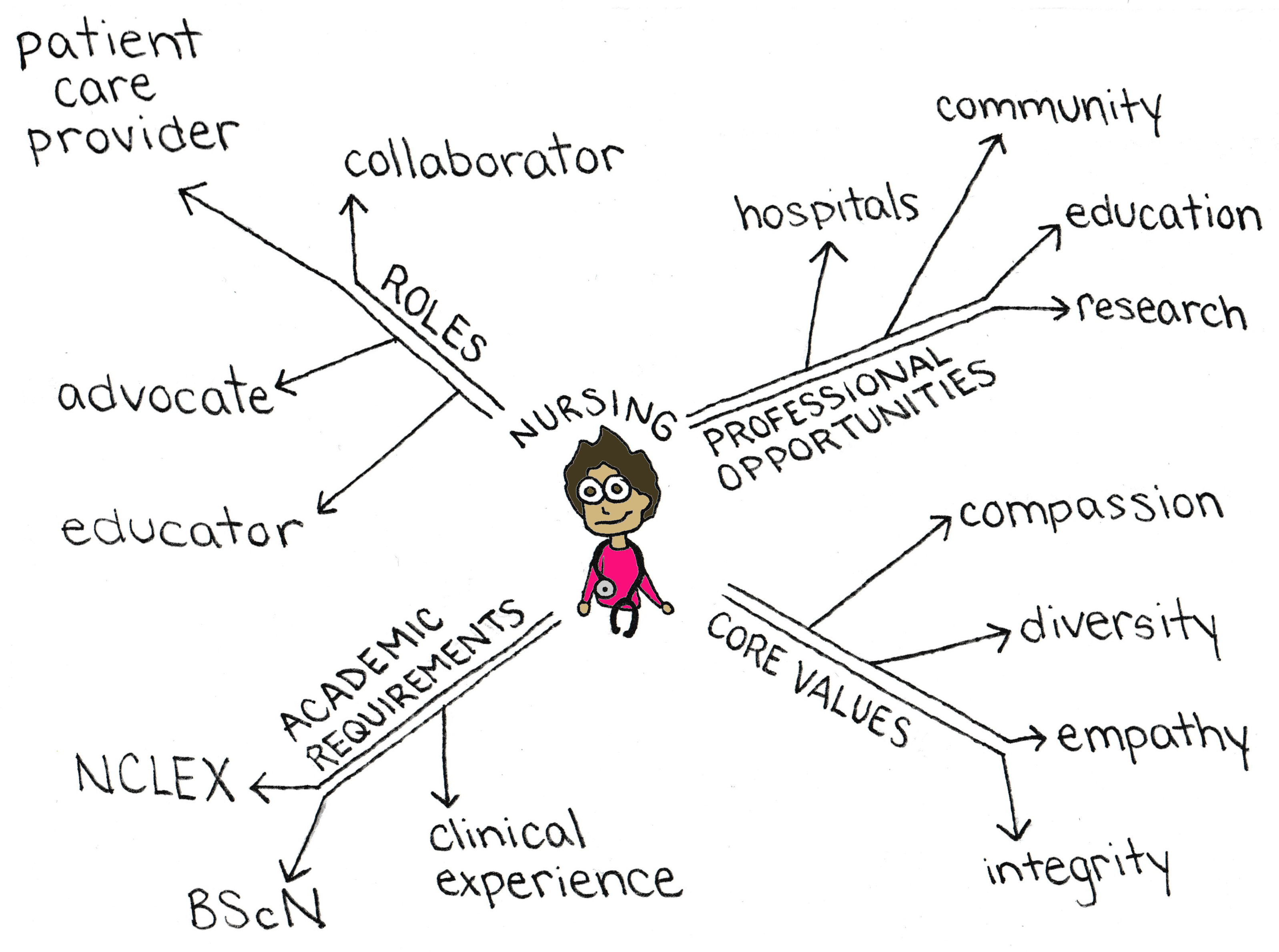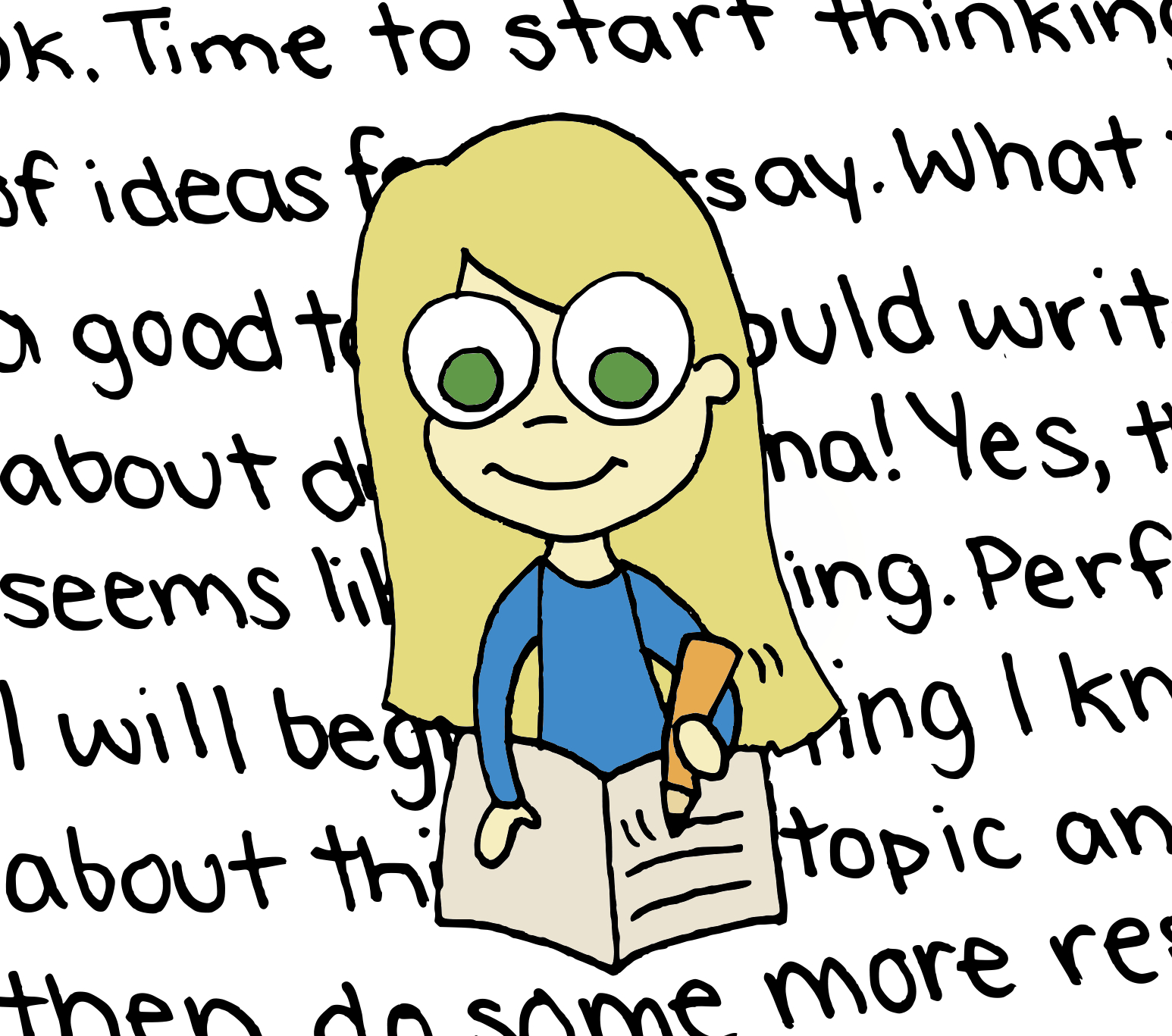Chapter 6: The Writing Process and Pre-Writing
Brainstorming to Get Started
There is no one right way to begin the writing journey. You might be given a topic or be instantly inspired by a topic. You might dive right in by writing complete sentences and paragraphs, or start with some brainstorming or freewriting. Some people choose their strategy based on the particular writing task and how familiar they are with the topic. You need to determine what works best for you.
Brainstorming encompasses several methods that help you generate ideas and see connections between ideas without writing in complete sentences. These methods have some common rules:
- Write down all of your ideas; don’t eliminate anything until you are finished brainstorming.
- Write in point form and don’t bother with editing at this stage.
- Work as quickly as you can.
- If you get stuck, stop and review your work or get someone else’s input.
Clustering
A cluster is one method of brainstorming that helps you find connections between ideas (Figure 6.3). It’s also called a tree diagram, mind map, or spider diagram. Start with a main concept: write it in the center of a page or screen and circle it. Next, think of ideas that connect to the main concept. Write these ideas around the main concept and draw connecting lines to the main concept. As you think of ideas that relate to any of the others, create more connections by writing those ideas around the one idea that connects them and draw connecting lines.

Figure 6.3: Clustering
Listing
Listing is just what it sounds like: making a list of ideas. Here are two kinds of lists you might use:
- Brainstorm list: Simply make a list of all the ideas related to your topic. Don’t censor your ideas; write everything down, knowing you can cross some off later.
- What I know/don’t know lists: If you know that your topic will require research, you can make two lists. The first will be a list of what you already know about your topic; the second will be a list of what you don’t know and will have to research. See Table 6.1.
Table 6.1: Writing Lists
| What I know about dementia | What I don’t know about dementia |
|---|---|
|
It impacts mental ability. It affects memory. It damages brain cells. There are different types. The risk factors include age and genetics. |
What part of the brain does it affect? What resources are available to nurses, clients, and families? What community resources are available? |
Freewriting
Freewriting is a technique that generates text, some of which you may eventually use in your final draft, as illustrated in Figure 6.4. The rules are similar to brainstorming and clustering:
- Write as much as you can, as quickly as you can.
- Don’t edit or cross anything out. If you must edit as you go, just write the correction and keep moving along. Don’t go for the perfect word – just get the idea on the page.
- Keep your pen, pencil, or fingers on the keyboard moving.
- You don’t need to stay on topic or write in any order. Feel free to follow tangents.
- If you get stuck, write a repeating phrase until your brain gets tired and gives you something else to write.
- Freewriting can be used just to get your mind working so that you can write an actual draft. In this case, you can write about whatever you want. Freewriting to generate ideas usually works best when you start with a prompt – an idea or question that gets you started. An example of a writing prompt might be “What do I already know about this topic?” Or “What is the first idea I have about my topic?” If you already have a list or an outline, you can freewrite about each item.

Figure 6.4: Freewriting
Attribution statement
Content from this page was revised and adapted from:
The Word on College Reading and Writing by Carol Burnell, Jaime Wood, Monique Babin, Susan Pesznecker, and Nicole Rosevear, licensed under a Creative Commons Attribution-NonCommercial 4.0 International License, except where otherwise noted. Download for free at: https://openoregon.pressbooks.pub/wrd/

